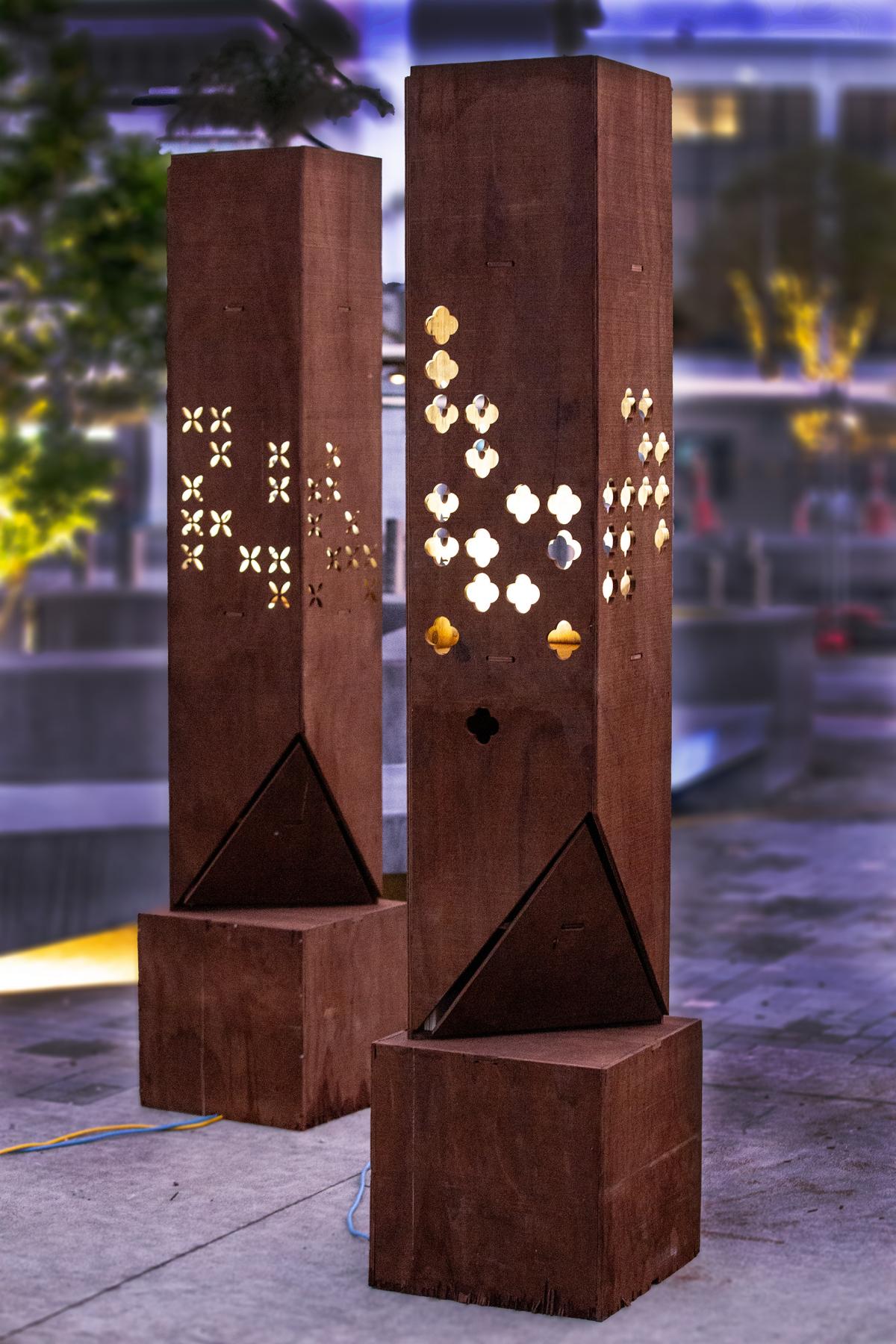Matariki Sculptures light up Takapuna
Over the Matariki long weekend, an installation at Takapuna's Waiwharariki Anzac Square celebrated the event with sculptures created by Unitec's School of Architecture second-year design studio.
Matariki Mau’s Catch is collection of eight light installations representing the stars and celestial bodies, with each element carefully curated to create a memorable experience that promotes cultural understanding and unity.
Hourglass Sculpture
All of our team members have been living in China for a long period of time, therefore, we have integrated the Culture of Chinese New Year into the project. The design reflects the values and themes of Matariki from an outsider’s perspective. The hourglass or sand timer shape of the sculpture represents the cyclical nature of time. The lower part of the sculpture represents the past and land, while the upper part represents the future and sky. The two parts of the sculpture can be seen as reflections of each other, and the centre part represents the inextricable connection between the past and future and can be seen as the present.
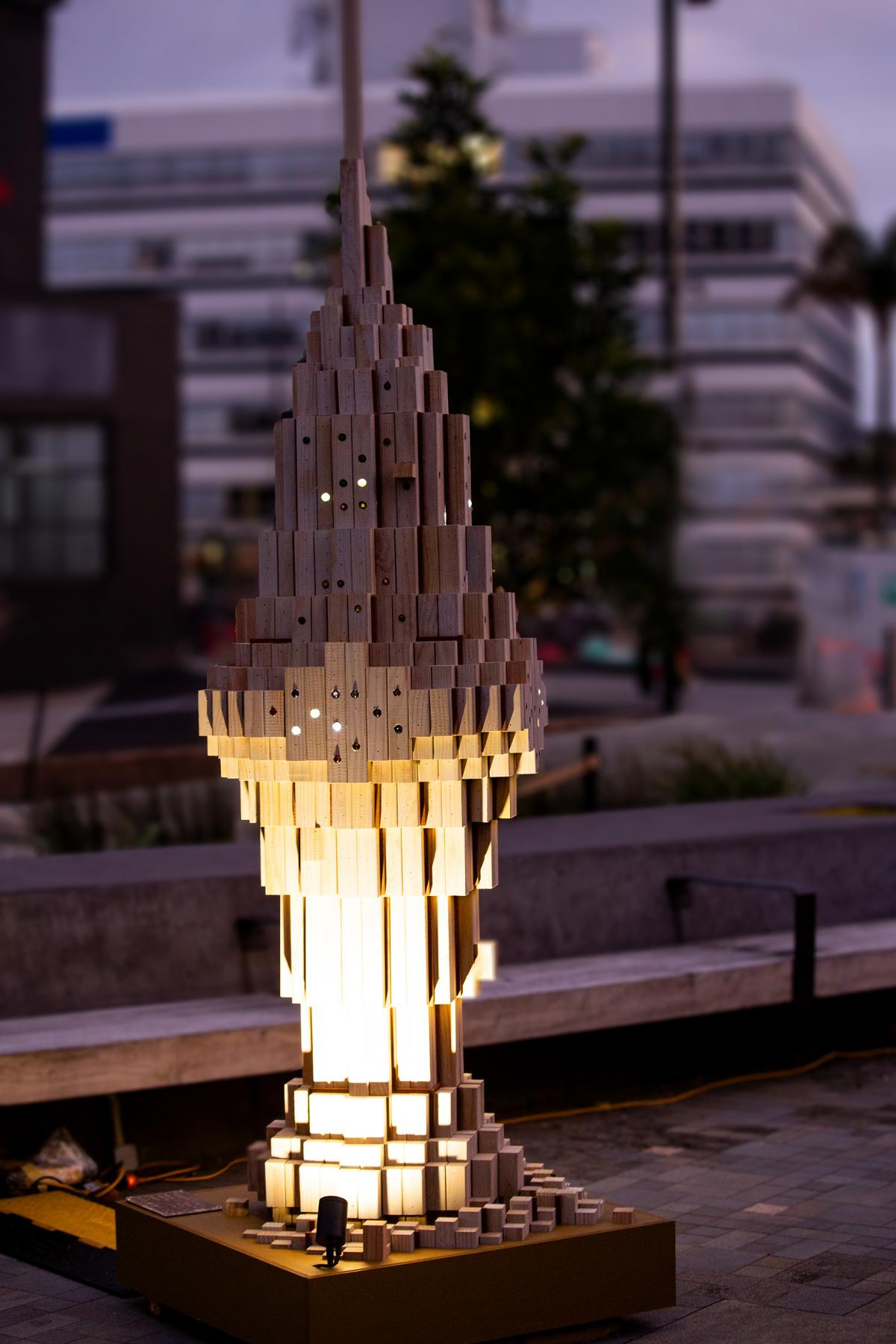
The Hinaki Group
Our interpretation of the Hinaki and Matariki illuminates the deep connection between the natural world and its guardians. The harvest is a core theme throughout Matariki, and the practice of Hinaki embodies this concept. As the fish are caught with the Hinaki, it symbolises the abundance and sustenance provided by the land and seas. the act of gathering and sharing the harvest aigns with the spirit of Matari-ki promoting unity, kinship, and the importance of reciprocity within communities.
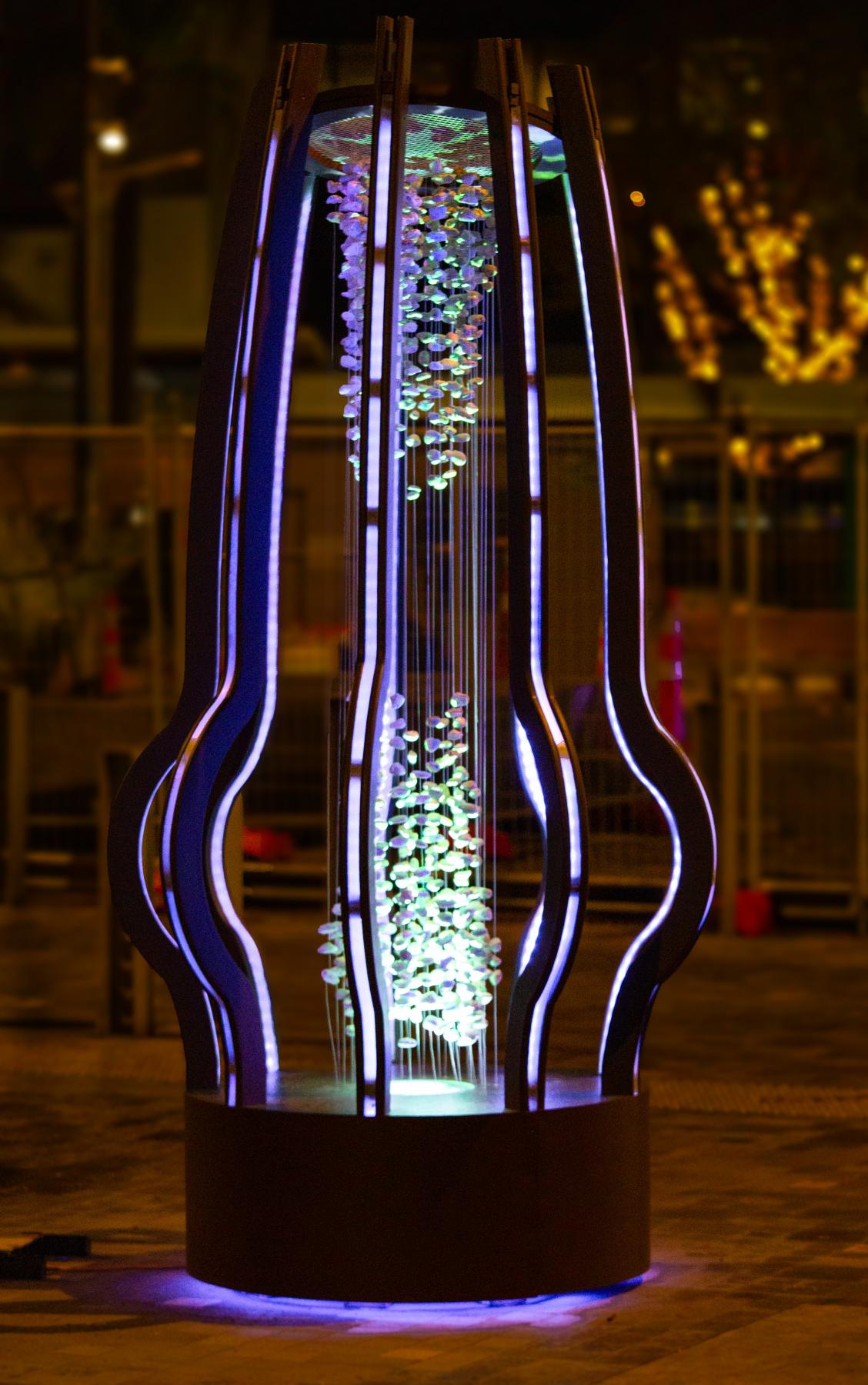
Waita
We wanted to encapsulate the essence of Waita; the flow of the ocean and the vast bodies of water that surrounds New Zealand. Our model is categorised into seven individual waves, with coloured lighting and sound representing the seven individual cultures of the novice architects who arranged the very composition of the wave. The waves are composed of polyester fabric wrapped around layers of tulle, encompassng a timber post structure posing as the skeleton layers of tulle, encompassing a timber post structure posing as the skeleton base for the waves. With this model, we represent the meaning of Matariki behind the eyes of foreign cultures around the world.
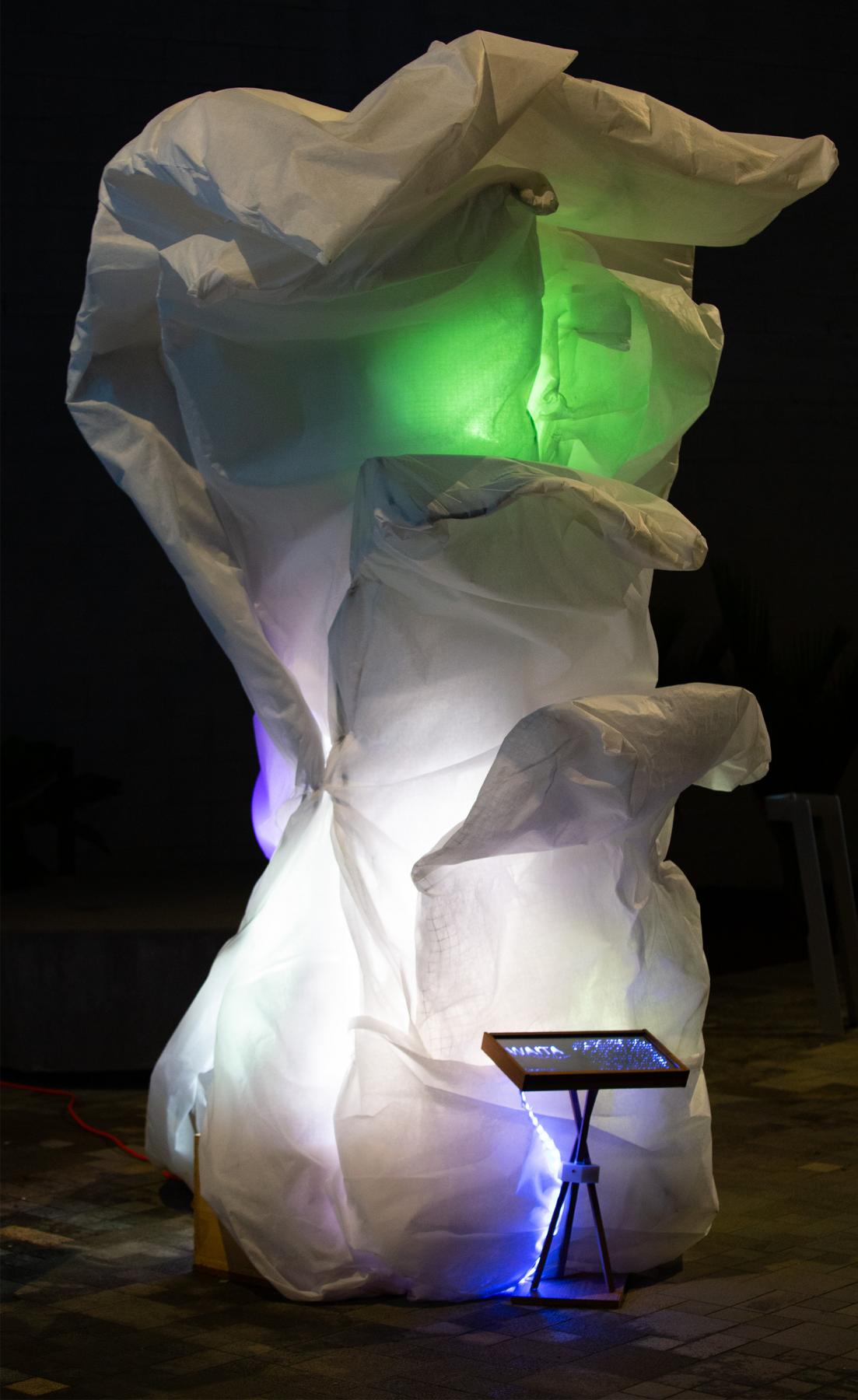
Tensegrity Koru Group
In Māori culture, the koru holds deep symbolic significance, representing growth, strength, and new beginnings. Each of our 7 fern-shaped pieces embodies these qualities, honoring the transformative power of Māori New Year. Tensegrity, derived from ‘tensional integrity,’ balances tension and compression, capturing nature’s delicate equilibrium, akin to the Pleiades’ celestial dance in Matariki. Our structure merges rigid strength and cable tension, creating harmony where fern shapes appear weightless, defying gravity.
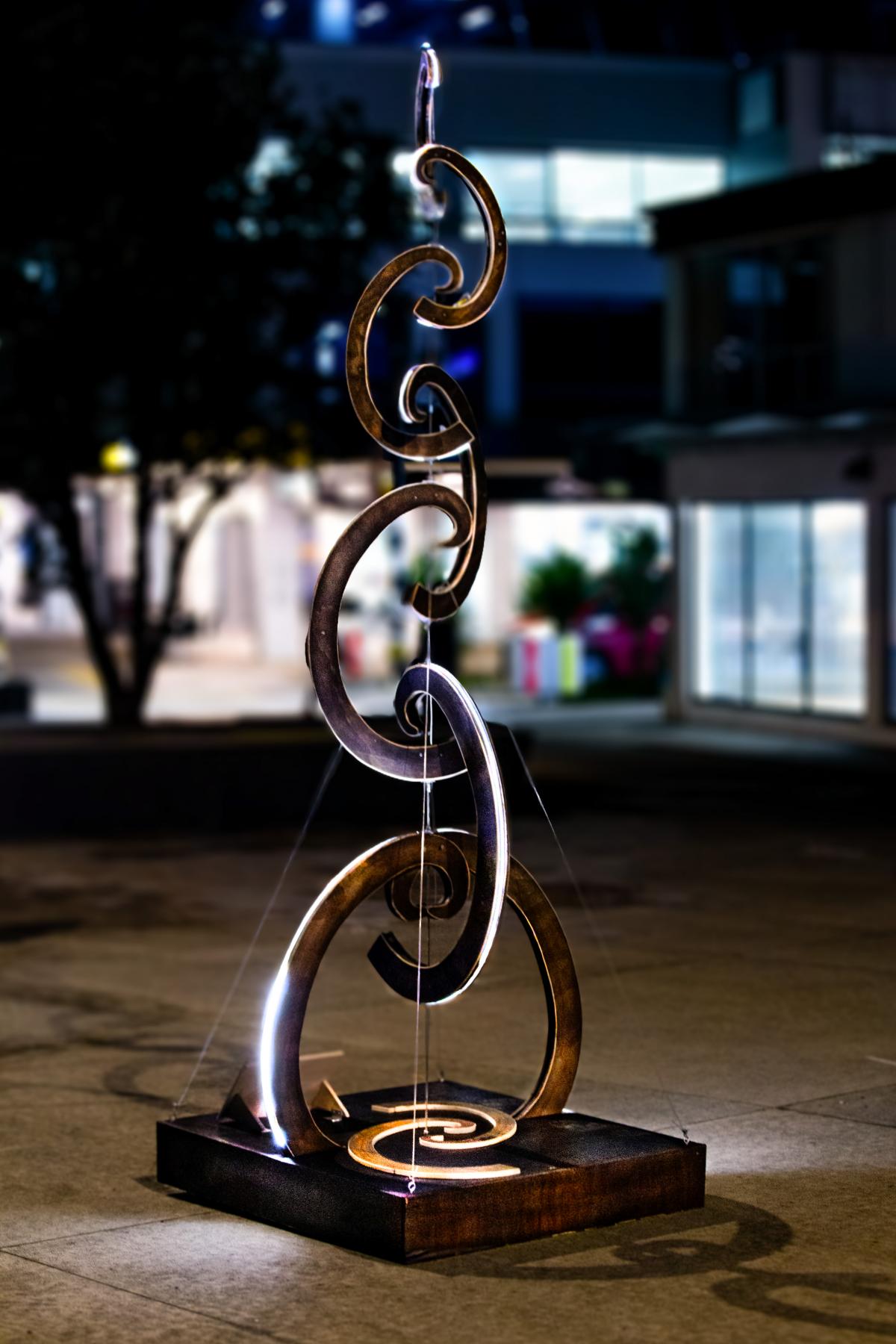
Tāwhirimātea
Tāwhirimātea, the god of the winds, is an important figure in Māori culture and mythology, and his influence is particularly felt during the Matariki period. Tāwhirimātea is believed to have thrown his own eyes into the sky, where they became the stars of the Matariki cluster. In Māori tradition, Tāwhirimātea is associated with the changing weather patterns that occur during the winter months when Matariki is visible in the sky. He is seen as the one who controls the winds, storms, and other weather-related phenomena that can impact the land and the people. During the Matariki period, it is common for Māori communities to hold ceremonies and rituals to acknowledge Tāwhirimātea’s role as the god of the winds and to seek his protection and guidance for the year ahead. These ceremonies may involve offerings of food or other gifts, as well as prayers and chants that honour Tāwhirimātea and ask for his blessings. Overall, Tāwhirimātea’s connection to Matariki highlights the importance of nature and the environment in Māori culture and underscores the idea that the natural world is alive and interconnected.
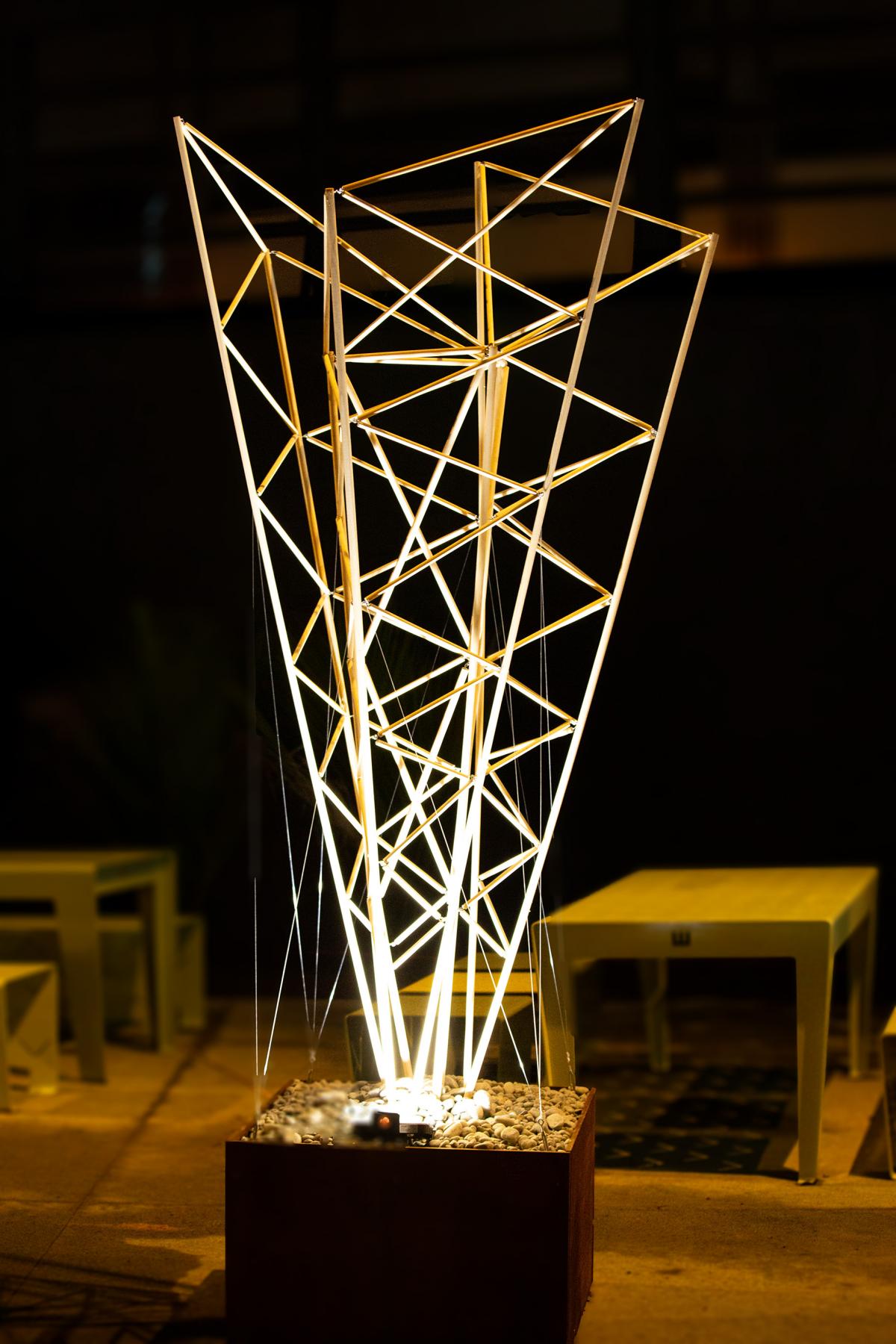
Blossom
This project requires us to explore the cultural significance of Matariki through the lens of design. We were tasked with creating an installation that celebrates Matariki and its values and themes. This model represents the growth in human life and the beginning of the Māori new Tear. All life starts wit love and a delicate nature which enables us to explore the vast possibilities ahead. We become independent and begin to expand into one of our endless leaves of undecided future. The model helps us to represent this by developing the idea of life as the form and curves progress. It is the choices we make today that define who we are tomorrow.
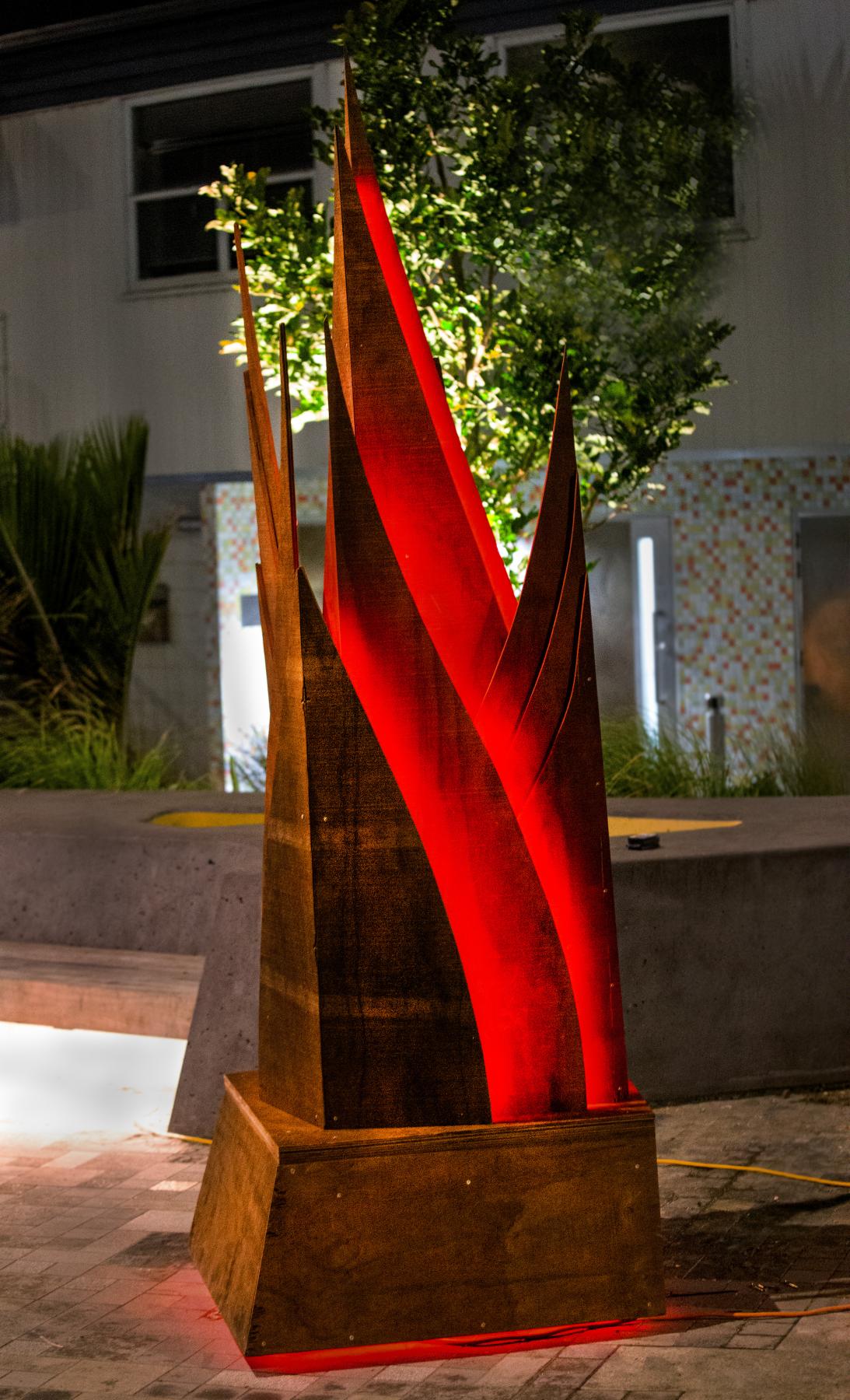
The Sails
The timber sails represent the journey of our lives. They are fixed to a large base which is the root of our knowledge and ancestry. Through this base runs a river, it will rise up from the floor and flow through the base. Starting wide and narrowing out, this is an example of flowing streams that are filled with history which represent the knowledge, skills, culture and tradition passed down through generations. As the river narrows, so the knowledge slowly dissipates. To avoid knowledge and traditions being lost a solid connection to our ancestry must be formed and remain bounded. The stay wire is this connection holding us fixed to our ancestors no matter how many difficulties we may face. Much like a sailboat in the ocean experiencing rough storms and high winds. They are tightened providing a solid connection from the base to the sails. This is an indication to the connection of our past, present and future in the journey that is our lives. It pays tribute to the prevalence of heritage and tradition from our ancestors.
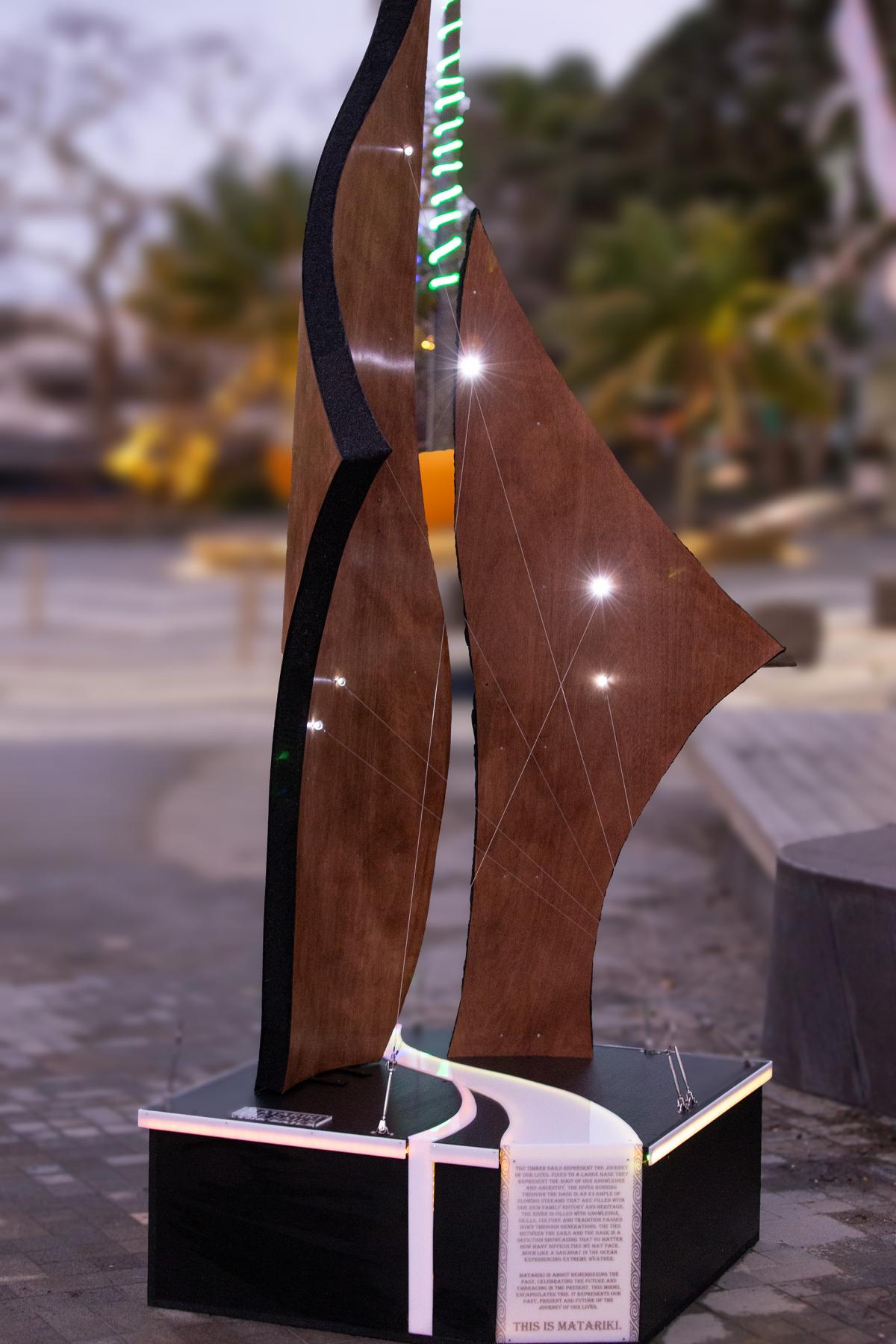
Toutai -a-Maui : Maui`s Catch
The old navigators of these ocean continuously saw Aotearoa as The land of the long white cloud. They also saw Maui tussling with his great Ika in the surface of the great ocean as a way of understanding the formation of land in the ocean, over time and space. Translated to modern time-space, the old world naturally sought to become in-sync with the natural world. They interpret it as a rhythm and are translated to abstract patterns outlines in these sculpt forms. These artworks seek to express the same way of looking from the old world through the present in to the future world. A way of seeing the community from the past through the present into the future. The Moana, European and Asia communities share these essence of patterns. Toutai-a-Maui (Maui’s Catch) capture not only the story of the great fisherman and navigator Maui but also look at the natural formation of this land; from below the ocean is an ongoing and dynamic and natural process. Each plinth will display a particular moment in time of maui's tussle with the fish. All three plinths can be united and can also be read as one, showing the many moments brought together over Time and Space.
